First Punic War › The Lamentations of Isis and Nephthys » Origins and History
Articles and Definitions › Contents
- First Punic War › Ancient History
- The Lamentations of Isis and Nephthys › Antique Origins
Ancient civilizations › Historical places, and their characters
First Punic War › Ancient History
Definition and Origins

The First Punic War was fought between Carthage and Rome between 264 and 241 BCE, largely over control of Sicily. The longest continuous war in history up to that time was fought on the island, at sea, and in north Africa with both sides enjoying victories and suffering near-catastrophic defeats. The Romans, with seemingly inexhaustible resources, adapted to the necessities of naval warfare and eventually prevailed. Sicily became their first foreign province. Carthage was not finished, though, and once it had sorted out its internal problems and gained new finances the conflict would resume with the Second Punic War within a generation.
CAUSES OF THE WAR
Relations between the two powers had largely been peaceful for centuries before the war. Peace treaties were signed in 509 BCE, 348 BCE, 306 BCE, and 279 BCE, which outlined each empire ’s sphere of influence, but when Rome became more ambitious in Magna Graecia, Carthage sought to defend its interests. The particular bone of contention was Sicily, a strategically important and prosperous island that the Carthaginians had long disputed with Greek city -states and which now also attracted the attentions of Rome. When Rome took control of Rhegium and Messana sought Roman protection from the double threat of Carthage and Hieron II (tyrant of Syracuse ), relations soured further between the two great powers of the Mediterranean, both wary, suspicious, and eager to outdo the other.
Messana had been conquered by the Mamertines, a group of disreputable mercenaries from Campania in Italy, in 288 BCE.Losing a battle with Hieron II c. 265 BCE, they first looked to the Carthaginians for help who obliged by establishing a garrison in the city. The Mamertines also saw Rome as a powerful ally who could guarantee their independence, and when their help was offered, they removed the Carthaginian garrison. Rome sent the consul Appius Claudius Caudex and two legions to Sicily while Carthage responded by first crucifying the garrison commander who had been kicked out of Messana and then forming an alliance with both Acragas ( Agrigento ) and Syracuse. On arrival, the Carthaginian fleet joined forces with Hieron, besieged Messana, and waited to intercept the Roman landing by Appius Claudius. Hanno, the Carthaginian commander, warned the Romans that his fleet would ensure the Romans would not even be able to wash their hands in the sea. Faced with this dramatic response from Carthage, the Roman consul, now at Messana, offered a peace deal, but it was rejected by the Carthaginian commander Hanno.
FOR ROME TO DEFEAT CARTHAGE & PREVENT CONTINUAL REINFORCEMENT OF SICILY BY SEA SHE NEEDED A NAVAL FLEET CAPABLE OF THE JOB.
The Roman ships and 16,000 troops of Claudius could not be stopped, though, and, at the second attempt, they reached Messana overnight to break the siege on the city, defeating both the Carthaginian and Syracusan armies. A new Roman commander, consul Manius Valerius Maximus Messalla, took over from Claudius and attacked Syracuse itself. Hieron surrendered before the Carthaginian fleet could offer help and, on agreeing to become Rome's ally, was allowed to remain in power. Losing its ally did not deter Carthage and, probably encouraged by the withdrawal of half the Roman forces back to Italy, sent another army to Sicily in 262 BCE. The First Punic War was underway.
OPENING ENGAGEMENTS – ROMAN VICTORIES
The Romans besieged Acragas with four legions led by both consuls L. Postumius Megellus and Q. Mamilius Vitulus in 262 BCE, and when the Carthaginians tried to defend their ally, they were defeated and the city sacked. The harsh treatment of Acragas revealed to the Sicilian city-states what Rome was capable of. Segesta was another loss to Carthage, the city deciding to join the Roman cause in 263 BCE. Small-scale engagements then occurred without any decisive outcome, and Acragas was sacked for a second time with 50,000 of its inhabitants enslaved. However, it was clear by 261 BCE that if Rome wanted to defeat Carthage, prevent continual reinforcement of the enemy by sea, and control all of Sicily, it would need a naval force capable of the job.
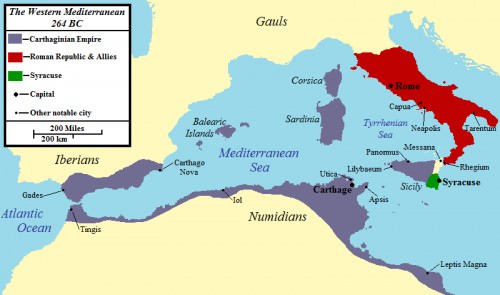
The Western Mediterranean 264 BCE
In the spring of 260 BCE, Rome had managed to build itself in only 60 days a fleet of 20 triremes and 100 quinquereme warships which had three banks of rowers organised into groups of five. Not having any great experience of naval warfare at this point, the Romans probably copied the Carthaginian vessels they had managed to capture earlier in the war and the rowers trained on special benches on land while the ships were constructed.
As in many other areas of technology the Romans added innovations to existing designs. In this case, they added the corvus(raven), a rotating platform with a giant holding spike (like a beak, hence the bird name). This bridge was 11 metres long and could be lowered onto an enemy vessel to allow a heavy infantry unit (perhaps 80-120 men) to board them. The idea would negate the superior seamanship of the Carthaginians and make naval combat more like a land battle, which the Romans were more familiar with. The invention was a success and brought the Romans immediate victory when their fleet of 145 ships, commanded by Duilius, defeated the Carthaginian fleet of 130 ships at the battle of Mylae (Milazzo) in 260 BCE. Duilius was honoured with a Roman triumph, the first in Rome's history to be awarded for a naval victory.
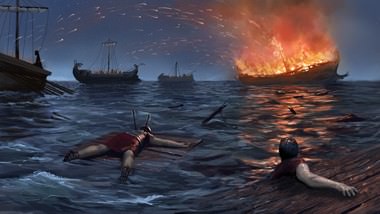
Roman Naval Warfare
Following two years of stalemate in which the Romans contented themselves with raids on Corsica and Sardinia, they won another naval battle at Sulcis in 258 BCE. The Carthaginians crucified their commander as a result of the defeat. Then, in 256 BCE, a large Roman fleet (of 330 ships according to Polybius ) won another important victory, at the battle of Ecnomus (Licata). The Carthaginians seemed to have no answer to the corvus boarding tactic. The consul Marcus Regulus Atilius then landed with an army of four legions at Clupea, also known as Aspis (in modern Tunisia). The war was now expanding to Carthaginian soil.
CARTHAGE FIGHTS BACK
Once in Africa and somewhat inexplicably, the Romans chose this moment to recall half the army and the fleet, but this over-confidence still left Regulus some 15,000 infantry and 500 cavalry at his disposal. The Roman Senate may have thought an attack on Carthage would have to wait until the approaching winter was over and so withdrew two legions to Italy. In any case, Regulus won a comprehensive land battle south of Tunis where the Carthaginians, with no fewer than three commanders, were not helped by the rough terrain which made use of their elephants impossible. Regulus occupied the city and in 255 BCE peace talks followed between the two sides but collapsed under the Roman commander's excessive demands which included Carthage giving up Sicily altogether.
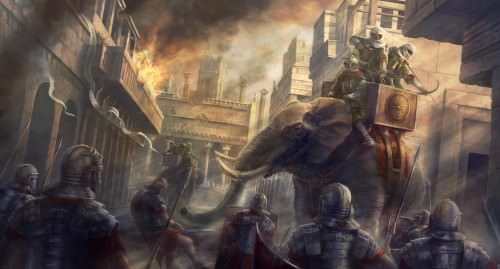
Carthaginian War Elephant
Carthaginian fortunes improved when their mercenary Spartan commander Xanthippus reorganised the army and, with 12,000 infantry and 4,000 cavalry, prepared to face the Romans. Xanthippus brilliantly combined his cavalry and 100 war-elephants, totally defeating the enemy and capturing the Roman general in the process. 12,000 Romans were killed against 800 Carthaginians. The remains of Regulus' army (a mere 2,000 men) managed to flee and were picked up by a newly dispatched fleet at Clupea, but most of these ships were then destroyed in a storm drowning as many as 100,000 men. Polybius described it as the greatest naval disaster in history. Perhaps if the Romans had not withdrawn half their number and made better use of the local Libyan uprisings at Carthage, the war might have ended in 255 BCE. Instead, there were still 14 more years to go in what was proving to be a brutal and exhausting conflict.
THE WAR RETURNS TO SICILY
Having failed to capitalise on their early success in Africa, the Romans returned to familiar ground in Sicily in 254 BCE when they captured Panormus (Palermo). Of the 70,000 population, those who could pay 200 drachmas were given their freedom, the rest were enslaved. The Carthaginians, in the meantime, sacked and razed Acragas but were now left with only a narrow coastal strip in their control. Once again, though, the elements conspired against the Romans when a storm destroyed 150 ships of the fleet of C. Sempronius Blaesus while he was returning from another raid on North Africa. Again thousands of men drowned and it may be that the corvus was in part to blame for its added weight to the ships in bad weather may have been a factor in the sinking of so many vessels. The corvus could, of course, have been dismantled and stowed for voyages, but it is interesting to note that the device is not mentioned again after this disaster.
Following a period when Carthage had to concentrate on affairs closer to home and ensure its control of its African territories, the city's ambitions once more stretched to Sicily, and another army was sent to the island in 251 BCE. The expedition, led by Hasdrubal, was another failure, though, and the army was defeated near Panormus by two legions commanded by the consul Lucius Caecilius Metellus in June 250 BCE. Caecilius even captured the Carthaginian's elephants, which had, in fact, caused more trouble to the Carthaginian infantry than they had to the enemy, and shipped them back to Rome to entertain the populace during his triumph. Regulus (back again) and fellow consul L. Manius Vulso then proceeded to lay a lengthy, and ultimately unsuccessful, siege of Lilybaeum (Marsala). The city and the other Carthaginian fortress cities were proving impossible nuts to crack.
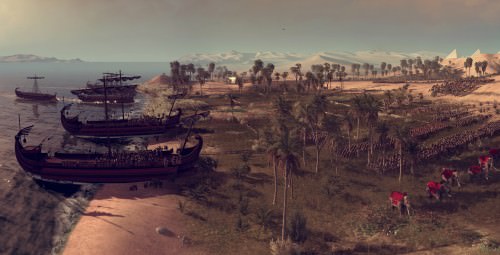
Naval Landing
THE WAR DRAGS ON – HAMILCAR COMMANDS
Just as Carthage kept losing on land and the Romans suffered losses at sea, so the trend continued in 249 BCE when the Carthaginian fleet, led by Adherbal, defeated the Roman fleet at Drepana (Trapani) capturing 93 of the 120 enemy ships. The Romans had been led by the unpopular consul of 249 BCE, P. Claudius Pulcher, he who famously threw his sacred chickens into the sea after they refused to provide the good omen of eating prior to battle. The Romans would soon follow the route of the chickens when another large fleet, which included 800 supply ships, was sunk for a third time by a storm, this time in the Bay of Gela. This did not prevent the Romans from taking Eryx (Erice), but the war was now taking its toll on both sides and their finances were incapable of funding more armies until 247 BCE. Carthage had even resorted to asking Egyptian ruler Ptolemy II for 2,000 talents to help them fund the war effort. Unsurprisingly, he could not be persuaded to part with such a huge sum.
Then the enterprising Hamilcar Barca (father of Hannibal ) came to the fore. He replaced Carthalo, who had not been altogether unsuccessful, as the commander of the Carthaginian fleet. Hamilcar first raided the Italian coast in 247 BCE, perhaps in search of booty to pay his mercenaries, and then landed on Sicily at Heircte near Panormus. This position allowed Hamilcar to harass the rear of the Roman forces who were besieging Drepana and Lilybaeum which were Carthage's last remaining strongholds on Sicily. Hamilcar stuck to lightning quick guerrilla tactics (hence his name Barca from the Punic Baraqmeaning lightning) as Carthage no longer had the resources for a large army, but he did capture Eryx in 244 BCE which became his new base. The Carthaginian commander also continued to attack the Italian mainland, but without a significant force at his disposal his effect on the war was limited. Perhaps more useful for Carthage in the longer term were the campaigns of Hanno the Great in Libya who expanded Carthage's African empire and so increased the source of tax revenue needed to fund the outrageously expensive war.
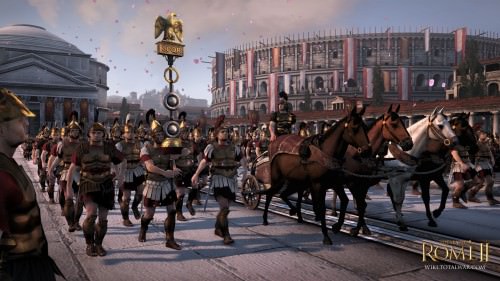
Roman Victory Procession
ROME VICTORIOUS
242 BCE saw the Romans with a brand new 200-ship fleet, funded this time by loans from rich private citizens, under the command of consul Gaius Lutatius Catulus. He put it to good use and besieged, yet again, Drepana. On 10th March 241 BCE, the Romans defeated a Carthaginian fleet led by Hanno sent to relieve the besieged city off the Aegates Islands (Isole Egadi).50 Carthaginian ships were sunk, 70 captured, and 10,000 prisoners taken. This loss was not huge but, after decades of war, it drove the cash-strapped Carthaginians to seek peace terms.
Carthage was made to withdraw from Sicily and had to pay Rome 3,200 talents of silver in reparations over the next decade.Sicily became Rome's first foreign province ( provincia ) and Corsica and Sardinia would soon fall under Roman control too. In the event, Rome largely ignored Sicily in the following decades, and the Carthaginians had to deal with revolts and wars from unpaid mercenaries in Libya. Within a generation, though, and this time led by their most gifted general Hannibal, the Carthaginians would concentrate on land warfare and return to attack Rome much closer to home in another epic conflict, the Second Punic War of 218 - 201 BCE.
The Lamentations of Isis and Nephthys › Antique Origins
Ancient Civilizations
The Lamentations of Isis and Nephthys is an ancient Egyptian text in which the two goddess-sisters call the soul of the god Osiris to rejoin the living. The poem takes the form almost of a call-and-response liturgy in which one officiant's statements elicit a similar reply from another. In the Lamentations, the dual entreaties of the two sisters echoed each other in their attempts to symbolically revive Osiris.
The best-preserved version of this work comes from the Berlin Papyrus 3008 dating to the Ptolemaic Dynasty (323-30 BCE) though the work is much older. This papyrus was appended to a copy of The Book of the Dead owned by a woman named Tentruty (also given as Teret) and is written in hieratic script (the cursive, everyday, script of the Egyptians). The work is not a part of The Book of the Dead, however, which is a compilation of spells to help the deceased navigate the afterlife, not a narrative piece.
In the Lamentations, the two goddesses entreat the soul of the departed to return, to live again among them, and invoke Horus, Osiris' son, as his protector in life who will provide him with "bread, beer, oxen, and fowl" and whose sons will guard his body and protect his soul. In the end, Osiris returns to life as the poem ends with the line, "Lo! He Comes!" Although recited to Osiris, it became a regular part of funeral services where it was intended to 'wake the dead' to the afterlife. When a person died, it was thought their soul was trapped in the body, the house they had grown used to, and the Lamentations would wake that entangled soul and assist it in moving forward.

The Bremner-Rhind Papyrus
The poem is derived from a longer work, Festival Songs of the Two Weepers or The Songs of Isis and Nephthys. Scholar Miriam Lichtheim discusses the background of the piece:
The text belongs basically to the ritual of the Osiris mysteries as performed in the temples. But by being included in a Book of the Dead, it was adapted to the funerary service of a private person, an adaptation made possible by the traditional association of every dead person with the god Osiris. The text resembles a longer work found in papyrus Bremner-Rhind (Papyrus British Museum 10188), known as "The Songs of Isis and Nephthys". This work, dating to the 4th century BCE, was clearly designed for performance in the temples of Osiris on certain feast days. Comparison of the two compositions shows that the shorter work, the Lamentations, was not an abridgement of the far more elaborate Songs, but a different version (116).
The emotional power of the Songs and Lamentations comes from the Osiris Myth, which by the time of the New Kingdom(1570-1069 BCE) was the most popular story in Egypt, and the Osiris Cult, which became the Cult of Isis, the most widespread and influential.
THE LAMENTATIONS OF ISIS AND NEPHTHYS TEXT
The following translation of The Lamentations of Isis and Nephthys comes from R. O Faulkner's work on the Berlin Papyrus 3008. The introduction was spoken by a priest and the reference to "the Osiris Tentruty, born of Tekhao, called Persis " is the name of the deceased woman Tentruty, whose father was Tekhao of the family of Persis. The introduction personalized the Lamentations so the soul of the dead would listen, heed the call, and rise from the body to new life.
Recitation of blessings made by the Two Sisters in the house of Osiris-Khentamenti, the great god, lord of Abydos, in the fourth month of Inundation, day 25, when the same is done in every place of Osiris, at every feast of his:To bless his ba [soul], steady his body, exalt his ka [astral self], give breath to the nose of him who lacks breath.To soothe the heart of Isis and Nephthys, place Horus on his father's throne, and give life-stability-dominion to the Osiris Tentruty, born of Tekhao, called Persis, the justified.It benefits the doer as well as the gods. Recitation:Isis speaks, she says:Come to your house, come to your house!You of On, come to your house,Your foes are not!O good musician, come to your house!Behold me, I am your beloved sister,You shall not part from me!O good youth, come to your house!Long, long have I not seen you.My heart mourns for you, my eyes seek you,I search for you to see you!Come to your beloved, come to your beloved!Wennefer, justified, come to your sister!Come to your wife, come to your wife,Weary-hearted, come to your house-mistress!I am your sister by your mother,You shall not leave me!Gods and men look for you,Weep for you together.While I can see you I call to youWeeping to the height of heaven!But you do not hear my voice,Though I am your sister whom you loved on earth,You loved none but me, the sister, the sister.Nephthys speaks, she says:O good King, come to your house!Please your heart, all your foes are not!Your Two Sisters beside you guard your bier,Call for you in tears!Turn around on your bier!See the women, speak to us!King, our Lord, drive all pain from our hearts.Your court of gods and men beholds you,Show them your face, King our Lord!Our faces live by seeing your face!Let your face not shun our faces!Our hearts are glad to see you, King.Our hearts are happy to see you!I am Nephthys, your beloved sister!Your foe is fallen, he shall not be!I am with you, your body-guard,For all eternity.Isis speaks, she says:Ho, you of On, you rise for us daily in heaven!We cease not to see your rays!Thoth, your guard, raises your ba,In the day-bark in this your name of "Moon".I have come to see your beauty in the Horus-EyeIn your name of "Lord-of the sixth-day-feast".Your courtiers beside you shall not leave you,You conquered heaven by your majesty's might,In this your name of "Lord-of-the-fifteenth-day-feast".You rise for us like Ra every day,You shine for us like Atum,Gods and men live by your sight.As you rise for us you light the Two Lands,Lightland is filled with your presence;Gods and men look to you,No evil befalls them when you shine.As you cross the sky your foes are not,I am your guard every day!You come to us as child in moon and sun,We cease not to behold you!Your sacred image, Orion in heaven,Rises and sets every day;I am Sothis who follows him,I will not depart from him!The noble image issued from youNourishes gods and men,Reptiles and herds live by it.You flow from your cavern for us in your time,Pouring out water to your ba,Making offerings to your ka,To nourish gods and men alike.Ho, my Lord! There is no god like you!Heaven has your ba, earth your form,Netherworld is filled with your secrets,Your wife is your guard,Your son Horus rules the land!Nephthys speaks, she says:O, good king, come to your house!Wennefer, justified, come to Djedet,O lusty bull, come to Anpet!O lover of women, come to Hat-mehyt,Come to Djedet, the place your ba loves!The ba's of your fathers are your companions,Your young son Horus, the sisters' child, is before you;I am the light that guards you every day,I will not leave you ever!O you of On, come to Sais,"Saite" is your name;Come to Sais to see your mother Neith,Good child, you shall not part from her.Come to her breasts that overflow,Good brother, you shall not part from her!O my son, come to Sais!Osiris Tentruty, called Nyny, born of Persis, justified.Come to Sais, your city !Your place is the Palace,You shall rest forever beside your mother!She protects your body, repels your foes,She will guard your body forever!O good King, come to your house,Lord of Sais, come to Sais!Isis speaks, she says:Come to your house, come to your house,Good King, come to your house!Come, see your son HorusAs King of gods and men!He has conquered towns and nomesBy the greatness of his glory!Heaven and earth are in awe of him,The Bow-land is in dread of him.Your court of gods and men is hisIn the Two lands, in doing your rites;Your Two Sisters beside you libate to your ka,Your son Horus presents you offeringsOf bread, beer, oxen, and fowl.Thoth recites your liturgy,And calls you with his spells;The Sons of Horus guard your body,And daily bless your ka.Your son Horus, champion of your name and your shrine,Makes oblations to your ka;The gods, with water-jars in their hands,Pour water to your ka.Come to your courtiers, King our Lord!Do not part from them!Lo, He Comes!
THE OSIRIS MYTH
The context of The Lamentations of Isis and Nephthys is understood within the framework of the story of Osiris' murder by his brother and his return to life. Although the myth became popular later in Egypt's history, it is possible the paradigm was known featuring other gods much earlier such as Min, an early fertility god, who later became associated with Osiris.
The story begins at the dawn of creation when five gods were born of Geb and Nut: Osiris, Isis, Set, Nephthys, and Horus (known as Horus the Elder to differentiate from Horus the son of Osiris and Isis). To Osiris was given the responsibility of ruling the earth and caring for the fragile creatures known as human beings. Osiris married his sister Isis and took her with him as queen to the land of the human beings. Osiris and Isis found these mortals in a barbaric state, killing each other for no reason, and lacking any form of culture or civilization. Osiris, with Isis as consort, gave them laws, culture, taught them the proper reverence for the gods and the ways of worship, and provided them with the gifts of agriculture. Isis granted to men and women the gift of equality in all things and soon the land was a paradise.
Osiris' brother, Set, grew jealous of their success and power. He was already plotting against the king when his wife, Nephthys, overcome by the beauty of Osiris, transformed herself into the shape of Isis and seduced the king. Set did not blame his wife for being unfaithful but blamed his brother's irresistable charm and beauty. He had an ornate casket made, the most beautiful ever created, to Osiris' exact measurements and then threw a grand party at which he offered the chest to anyone who could fit into it. Osiris fit perfectly, of course, and when he lay down in the chest, Set slammed the lid on and threw it into the NileRiver. He then took the throne by force and declared his reign with Nephthys as his consort.
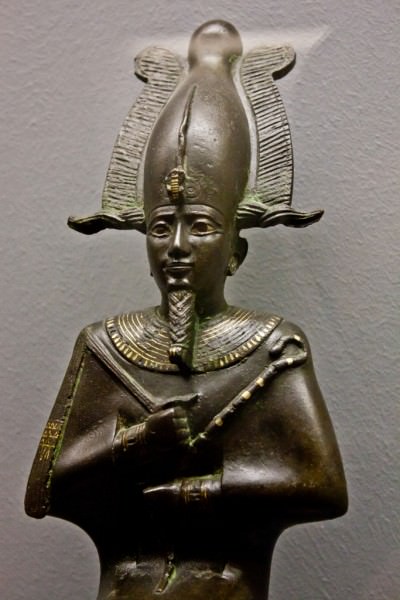
Osiris
The casket floated down the Nile and finally lodged in a tamarisk tree by the shores of the city of Byblos. The tree grew around and encased the chest but Osiris' beauty and sweet scent infused the tree and attracted the attention of the king and queen of Byblos, Malcander and Astarte. They had the tree cut down and brought back to their palace as an ornamental pillar at court.
Isis, meanwhile, had gone in search of her husband and finally arrived by the shores of Byblos. As always when she went among mortals, she was disguised as an elder woman and was befriended by the handmaidens of the queen when they came to the shores to bathe. The handmaidens brought her back to the palace with them where she quickly ingratiated herself to the royal couple, and Astarte installed her as nursemaid to her two young sons.
Still mourning the loss of her husband, Isis became very fond of the younger son, Dictys, and decided to make him immortal so his mother would never know loss. To do this, she had to bathe him in eternal flame nightly to burn away his mortality. One night, Astarte entered the room while Isis was performing the ritual and, seeing her son turning in the fire, screamed. Isis was enraged at the disturbance and threw off her disguise, revealing herself. Malcander and Astarte fell to the floor, begging her to spare them and offering her anything she desired. She wanted only the tree which stood at court, and they quickly let her take it.
Isis freed Osiris' body from the tree and brought it back to Egypt where she hid it from Set in the swamps of the Delta. She asked Nephthys to guard over the body while she went to gather herbs for the potions which would restore him to life. Set, however, had heard of his brother's return and went out looking for him as Isis went to search for her herbs. He found Nephthys and tricked her into revealing where the body was hidden. Set then hacked Osiris to pieces and flung the parts across the land and into the river. When Isis returned, Nephthys told her what had happened and offered to do anything to help bring Osiris back. The two sisters then scoured the land, finding every piece of Osiris, and put him back together.
As the story continues, Isis and Nephthys have made Osiris whole except for his penis, which had been eaten by a fish and was lost. Although he was incomplete, he could still be revived. The people were suffering under Set's rule as he had forgotten about them and allowed the desert winds to blow from the dry places so the crops failed. Equality was forgotten as everyone struggled to survive and turned on each other. Isis knew it was imperative that Osiris return to bring order and harmony to the land. She and Nephthys worked together to call the soul of Osiris back to his body - this moment recreated in the Lamentations - and their spells and chants succeeded.
Osiris revived but, because he was not whole, could no longer reign in the land of the living; he would have to descend to the underworld where he would rule over the dead. Before he left, Isis transformed herself into a falcon (a kite) and flew around his body, drawing his seed into her own and becoming pregnant with a son, Horus. Osiris then descended and Isis, with the help of goddesses like Nephthys, Serket, and Neith, raised her son in the Delta swamps. When he came of age, Horus defeated Set in a series of battles for the kingdom and won. He then ruled justly, as his father had, restoring order to the land with his mother and aunt as his counselors.
STRUCTURE & DETAIL OF THE LAMENTATIONS
The Lamentations begins with Isis crying, "Come to your house, come to your house! You of On, come to your house; Your foes are not!" She is telling Osiris that his body, his former home, is safe and he may come back to it. She says, "My heart mourns you, my eyes seek you" and describes herself as "weeping to the height of heaven" as she cries for his return. She addresses him as Wennefer which means 'The beautiful one'.
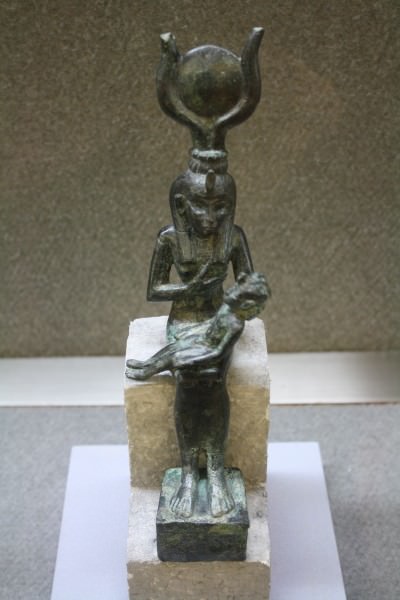
Isis
Nephthys then calls Osiris to his home, addressing him as king, describing how they call to him in tears to return. She pleads for him to "drive all pain from our hearts" and live and speak again, hold court as he once did, and let people once more look upon his beauty. She echoes Isis in assuring him that he will be safe as his "foe is fallen" and promises that she will be his bodyguard for all eternity.
Isis takes up the call again describing how everyone waits for his return and comparing him to Ra, the sun god, who rises again from the darkness every morning and to shine again in life as he did the day before. Like the sun, she says, Osiris fills the land with his presence and how "Gods and men look to you/No evil befalls them when you shine". Isis pledges she will guard him every day from harm and will never leave him. He will be safe, and justice will prevail as his son will rule in Set's place. She calls herself Sothis, a reference to the star Sirius, the brightest star in the night sky, traditionally associated with Isis and with constancy. She references his ba and ka which were aspects of the soul. The ba was that which could travel between earth and the heavens while the ka was one's spiritual body-double, a kind of astral self. When she says "Heaven has your ba, earth your form", she is reminding her husband that his soul can travel back from the afterlife to the world it used to know.
Nephthys speaks again conjuring Osiris back with imagery of "the lusty bull" and "lover of women" to coax his soul from the ether to the physical world. She references specific names (Djedet and Anpet) for the town better known as Mendes, one of the best-known cult centers dedicated to Osiris, and Hat-mehyt, the nome (province) where it was located. She reminds him of his son, Horus, and of others who miss him. Nephthys calls him to return to his mother Neith, to return to Sais - a city in the Delta near where Horus was raised - sacred to Neith, where he will be safe. This reference to the goddess Neith alludes to one version of the Egyptian creation myth where Neith was the wife of Atum, father of creation, and so mother of all.

Nephthys
The recitation concludes with Isis repeating the opening lines and then focusing on Horus and the great things he has done.She promises Osiris "offerings of bread, beer, oxen, and fowl" and tells him how his friends, like the god Thoth, wait for him, how his son is eager to see him, and she begs him not to part from all those who love him so dearly. The line, "The Sons of Horus guard your body" refers to the four deities, known as The Four Sons of Horus, who protected the vital organs of the dead. Isis is saying these gods have blessed his ka, his astral self, with their protection and he has nothing to fear. The piece ends with either Isis or both sisters crying out, "Lo, He Comes!" indicating their prayers have been answered and Osiris has returned to life.
THE LAMENTATIONS IN PRACTICE
THE LAMENTATIONS, WHICH WERE ORIGINALLY RECITED AT OSIRIS FESTIVALS OR THE FUNERALS OF ROYALTY, CAME TO BE USED IN THE FUNERARY SERVICES OF EVERYONE.
Osiris, as the first king, came to be associated with the ruler of Egypt in death while Horus, as Uniter of the Two Lands who restored order, was linked to the king in life. With some few exceptions, every king had a "Horus Name" they took at their coronation and identified themselves as Horus incarnate with Isis as their mother and protector. They were regarded as Osiris once they had died and passed on to the afterlife. In time, as the Osiris Myth grew in popularity, all the people of Egypt associated themselves with Osiris, and those who could afford it even had themselves and family members buried at Osiris' cult center at Abydos to be near him. The Lamentations, which were originally recited at Osiris Festivals or the funerals of royalty, came to be used in the funerary services of everyone. Women began to associate themselves more with Hathor in death while men continued to align with Osiris but, either way, The Lamentations of Isis and Nephthys was recited at funerals of either sex by professional mourners known as The Kites of Nephthys. These women, usually shown wearing black robes, would encourage mourners to grieve openly at funerals by their emotional rendition of the poem.
The Lamentations were considered most important, however, in festivals dedicated to Osiris to invoke the god. Scholar Geraldine Pinch writes:
When it became common to identify all dead persons with Osiris, Isis and Nephthys were often shown standing at either end of the funeral bier. The sisters, sometimes in the form of two kites (small birds of prey), were said to have kept a long vigil over the mummy of Osiris to protect him from further attacks by Set. This vigil was reenacted by two young women, who represented Isis and Nephthys, at festivals of Osiris and at the funerals of important people and sacred animals (171).
These festivals were extremely important in that, by honoring Osiris, the people were showing gratitude for the gifts of the land - particularly the inundation of the Nile which they relied upon for their crops - and their gesture would be rewarded by continued abundance. It was imperative the Lamentations be recited at the two major festivals of Osiris; one in autumn, The Fall of the Nile, which was a time of mourning the death of Osiris, and the other in spring, known as The Doorways of the Horizon are Opened, celebrating his rebirth. Historian Margaret Bunson explains:
As the Nile receded, the Egyptians went to the shore to bestow gifts and to show grief over Osiris dying another time. The Nile represented Osiris' capacity to renew the earth and to restore life to the nation. When the Nile began its steady rise toward the flood stage, Osiris again was honored. Small shrines were cast adrift on the river, and priests poured sweet water into the Nile, declaring that Osiris was found again (198).
The Lamentations began these festivals, as well as others, and had to be recited at a particular time and in precise fashion.Once the first recitation had been completed, the festival could begin but it was important it be recited again during the celebrations or mourning to ensure the participation of the god. The scribal priests gave very careful instructions for how and when the Lamentations were to be spoken:
Now, when this is recited the place is to be completely secluded, not seen and not heard by anyone except the chief lector-priest and the setem-priest. One shall bring two women with beautiful bodies. They shall be made to sit on the ground at the main portal of the Hall of Appearings. On their arms shall be written the names of Isis and Nephthys. Jars of faience filled with water shall be placed in their right hands, offering loaves made in Memphis in their left hands, and their faces shall be bowed. To be done in the third hour of the day, also in the eighth hour of the day. You shall not be slack in reciting this book in the hour of the festival. It is finished.
The Lamentations of Isis and Nephthys were also regularly performed in temples as part of services. The two young women, who were always beautiful virgins, sang the Lamentations to the accompaniment of tambourines and other musical instruments. The music, however, was not to overwhelm the vocals but only provide emotional atmosphere, either joyful or somber, depending on the occasion. The emphasis was always on the voices of the two goddesses lamenting their loss and calling to the departed.
LICENSE:
Article based on information obtained from these sources:with permission from the Website Ancient History Encyclopedia
Content is available under License Creative Commons: Attribution-NonCommercial-ShareAlike 3.0 Unported. CC-BY-NC-SA License